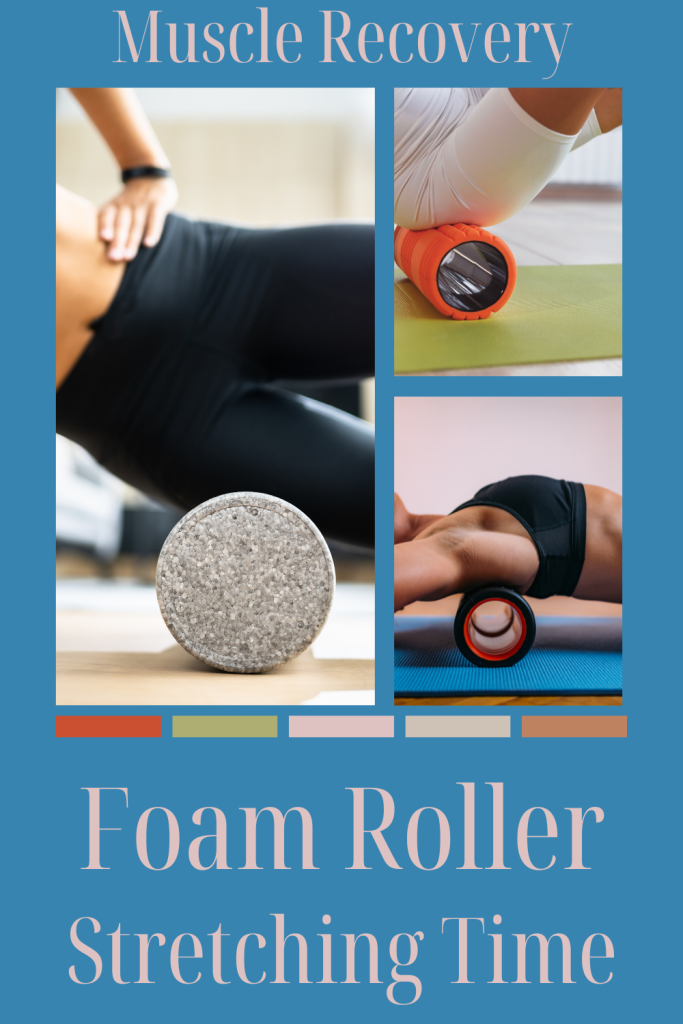Empowering Lifestyle Transformation

The Ultimate Muscle Maintenance Guide: Support Strategies and Stretching Techniques
Did you know that an adult carries around 30-40 pounds of muscle mass which is roughly 30-40% of the body weight? This staggering figure underscores not just the heft of our muscular system, but the crucial role it plays in overall health and well-being. In today’s fast-paced world where physical inactivity is all too common, understanding and implementing effective muscle care, muscle health, and muscle recovery strategies are more important than ever. Through The Ultimate Muscle Maintenance Guide: Support Strategies and Stretching’s, you can unlock the secrets to maintaining and enhancing the robust machinery of your body’s muscles.
Whether you’re an athlete, fitness enthusiast, or someone who simply wishes to keep their body in peak condition, this guide arms you with insights and practical approaches to support muscle integrity. Get ready to dive into the intricate world of fibers and fascia, where stretching goes beyond a mere morning ritual and becomes a cornerstone of holistic muscle maintenance.
Key Takeaways
Understanding the significant proportion of muscle mass relative to body weight highlights the importance of dedicated muscle care.
Comprehensive muscle recovery protocols are crucial for maintaining muscle health and ensuring longevity in physical activities.
Effective muscle support strategies can prevent injuries and enhance daily functioning, both essential for an active lifestyle.
The Ultimate Muscle Maintenance Guide: Support Strategies and Stretching’s offers a balanced blend of contemporary and timeless stretching techniques tailored for individuals at all fitness levels.
Incorporating muscle maintenance into daily routines contributes to better posture, reduced pain, and improved overall quality of life.
Advanced stretching regimens and informed muscle support practices serve as allies against the sedentary pitfalls of modern living.
Persistent application of the principles and practices from the guide will promote enduring muscle health and peak physical performance.
Understanding Muscle Maintenance and Its Importance
Muscular health is a pillar of overall well-being, playing a pivotal role in our daily functions and athletic performance. The term ‘muscle maintenance’ not only encompasses muscle recovery strategies but also involves ongoing care to preserve muscle health and function. This section will delve into the nuances of muscle maintenance, highlighting its critical role in promoting longevity and quality of life. We will explore how proper muscle support, recovery, and nutritional intake contribute to maintaining muscle tissue and ensuring its optimal performance over time.
Defining Muscle Health and Longevity
At the core of an active lifestyle is the health of our muscles. Muscle health refers to the ability of muscle fibers to contract, maintain strength, and recover from exertion. Longevity in this context means the preservation of muscle function as one ages. As such, it is essential to engage in routines that support muscle health and ward off the effects of aging, such as atrophy and reduced range of motion.

Improved Posture
Regular muscle support helps maintain a proper alignment of bones and joints, reducing the likelihood of developing poor posture.
Key Benefits of Regular Muscle Maintenance
Why emphasize regular muscle maintenance? The advantages are profound and multifaceted:
Improved Posture: Regular muscle support helps maintain a proper alignment of bones and joints, reducing the likelihood of developing poor posture.
Reduced Risk of Injury: A well-maintained musculature acts as a shock absorber during movements, decreasing the chance of strains and sprains.
Enhanced Performance: Athletes and fitness enthusiasts will notice increased strength and endurance as a direct result of meticulous muscle care.
Increased Flexibility: Flexibility is essential not just for athletes, but also for daily activities, making stretching a key component of muscle recovery and maintenance.
The Role of Nutrition and Hydration
No muscle maintenance discussion is complete without addressing the role of diet and water intake:
Protein: A building block for muscle repair and growth, protein is indispensable in any diet focused on muscle health.
Vitamins and Minerals: These nutrients are crucial for optimizing the body’s biochemical processes involved in muscle maintenance.
Hydration: Water is essential for transporting nutrients to muscles and assisting in waste removal, thereby facilitating muscle recovery.
By understanding these fundamental aspects of muscle health and maintenance, individuals can develop more informed strategies to support their muscular system, ensuring better health and performance in the long haul.
Support Strategies for Optimal Muscle Function
Nurturing muscle health is not only about muscle stretching and the execution of stretching techniques; it encompasses a broader spectrum of activities collectively geared towards muscle support and maintenance. By understanding and applying a variety of muscle maintenance strategies, individuals can enhance their muscular system’s performance and resilience. The importance of effective support strategies lies in their direct impact on reducing the probability of injuries and the guarantee of maintaining muscle function at an optimal level.
Targeted Exercises play an essential role in cultivating a framework of muscle support. These exercises are carefully designed to condition specific muscle groups, promoting strength and stability. Whether it’s through calisthenics or functional fitness routines, emphasizing form and control helps in fortifying the musculoskeletal architecture of the body.
Resistance Training forms a cornerstone of muscular development and endurance. Not only does it apply to heavy lifting or gym-based activities, but also includes the use of resistance bands or body-weight exercises that contribute to muscle support. Resistance training is not monolithic but can be tailored to cater to various levels of fitness and strength capabilities.
Another critical aspect of muscle maintenance regime is ensuring Proper Rest. It may seem counterintuitive, but muscles require time to heal and strengthen after vigorous activities. Adequate rest is imperative to avoid overtraining and provide the body the opportunity to rebuild and strengthen its musculature.
Correct Form is not only beneficial but vital in performing exercises effectively. It maximizes the efficiency of the workout and minimizes the risk of injury. Integrating proper form and technique into exercise routines is non-negotiable for achieving desired results and safeguarding muscle health.
Protective Gear and equipment are not to be underestimated as part of essential muscle stretching and support protocols, adding a layer of safety during physical activities that demand more from our bodies, such as cycling, football, or heavy weightlifting.
Listening to the Body’s Signals is perhaps one of the most critical yet often overlooked facets of muscle maintenance. Observing and responding to the body’s feedback can effectively pre-empt injury and inform when to push forward or scale back on certain activities.
Maintaining healthy muscles is not a static process but a dynamic one, filled with ongoing adjustments and adaptations. Through a thoughtful integration of these strategies, individuals can lay a solid foundation for lasting muscle functionality and support. The pursuit of muscle maintenance is a journey of understanding the delicate balance between exertion and relaxation, ultimately leading to improved quality of life and physical capabilities.
The Ultimate Muscle Maintenance Guide: Support Strategies and Stretching’s
Embarking on the journey of muscle maintenance demands a structured approach tailored to individual fitness levels and goals. This fourth instalment of our comprehensive muscle maintenance guide delves into the creation of a robust muscle maintenance routine and the integration of daily muscle support into your lifestyle, setting the foundation for sustained muscle health and expedited muscle recovery.
Creating a Muscle Maintenance Routine
Developing a muscle maintenance routine should not be a daunting task. It calls for a blend of scientific insight and personal preference. Factors such as workout frequency, the intensity of exercises, their duration, and the progression over time are crucial elements that contribute to a sound muscle maintenance plan. Let’s dissect these components:
Frequency: Aim for a routine that accommodates your schedule; consider a minimum of three times per week to ensure consistent muscle engagement.
Intensity: The level of effort should be challenging yet achievable, promoting muscle adaptation and strength without overburdening the body.
Duration: Allocate a reasonable amount of time for each session, balancing between cardiovascular and strength training exercises.
Progression: Gradually increase the complexity and intensity of your workouts to continuously challenge your muscles and facilitate growth.
Incorporating Muscle Support in Your Daily Life
When it extends beyond the gym, your muscle maintenance routine transforms into a holistic mantra for healthy living. Below are practical ways to weave daily muscle support into the fabric of your day-to-day activities:
Use ergonomic furniture to maintain proper posture during work hours, reducing strain on the musculoskeletal system.
Integrate micro-breaks into your schedule for stretching or walking to rejuvenate muscle groups and alleviate tension.
Consciously relax your muscles when not active; practice deep breathing or mindfulness to lower stress-induced muscle tightness.
By embracing these strategies, you can ensure continuous muscle recovery and reinforce the strength of your muscles, even outside of planned exercise sessions. Remember, the central tenet of The Ultimate Muscle Maintenance Guide: Support Strategies and Stretching’s is to make muscle care an integral part of everyday life for longevity and enhanced performance.
Advanced Stretching Techniques for Enhanced Flexibility
Delving into the world of advanced stretching techniques reveals a myriad of methods designed to improve enhanced flexibility and optimize muscle health. Utilizing these sophisticated stretching techniques is pivotal for those seeking to elevate their regular muscle stretching routine, pushing the boundaries of their body’s capabilities while securing a shield against common injuries.
At the forefront of these techniques is dynamic stretching, a powerful tool in activating muscles and increasing blood flow just before engaging in athletic activity. Unlike static stretches, dynamic stretching involves active movements that help in simulating the kind of actions to be performed in the upcoming exercise, effectively preparing the muscles for peak performance.
Arm circles to enhance shoulder mobility
Leg swings to loosen up the hips and hamstrings
Lunges with a twist to activate the core and stretch the hip flexors
PNF(Proprioceptive Neuromuscular Facilitation)
Another pillar of advanced stretching, PNF stretching, goes beyond ordinary boundaries by combining passive stretching and isometric contractions. This method not only amplifies flexibility but ensures that improvements are both significant and lasting.
Hold-relax with agonist contraction for improved muscle lengthening
Contract-relax to combat muscle resistance through tension and subsequent release
Yoga
Yoga an age-old practice rich in diverse postures and flows, contributes extensively to muscle stretching through its holistic approach to body movement and alignment. Here are a few poses that are exemplars of yoga’s capacity to boost flexibility:
Downward-Facing Dog for an all-encompassing stretch that targets the hamstrings, calves, and back
Pigeon Pose which delves deep into the hip rotators and flexors
Warrior series that enhance lower body strength and flexibility
These advanced stretching techniques serve as foundational pillars for athletes as well as those involved in physically demanding activities. By integrating them into a regular maintenance routine, practitioners can anticipate notable improvements in flexibility, a significant reduction in injury risk, and an overall increase in muscle elasticity and vitality.
Conclusion
In our journey exploring the multifaceted realm of muscle maintenance, we’ve unpacked the essentials of nurturing muscle health and underscored the vitality of muscle care. As we’ve seen, fostering strong, resilient muscles is not merely about aesthetics or performance but is intrinsically tied to our overall well-being. Regular muscle stretching, informed by both traditional methods and innovative techniques, is pivotal in muscle recovery and ensuring our bodies remain agile and robust against the trials of time and activity.
Key Takeaways for Ultimate Muscle Maintenance
Muscle care is the cornerstone of a healthy and dynamic lifestyle. By incorporating a thorough warm-up before exercise, adopting meditation for a serene mind-body connection, and engaging in a quiet moment to reflect on the day’s physical exertions, we honor the intricate system that underpins our physical autonomy. The strategies delineated in this guide are more than mere suggestions; they are the building blocks for enduring muscle fortitude and an investment in a life rich with movement and devoid of preventable injuries.
Next Steps in Continuing Your Muscle Maintenance Journey
The path to continuous improvement in muscle upkeep does not end here. It involves an ongoing commitment to evolving one’s routines, a sustained motivation to overcome the inertia of sedentary habits, and an embodiment of the principles we’ve extolled. As we wrap up this guide, remember that the journey of muscle maintenance is a perpetual cycle of learning, practicing, and mastering. By staying true to the tenets of routine muscle care, listening intently to the feedback our bodies provide, and persistently applying the gleaned knowledge, we can all ensure that our muscles remain engines of vitality and conduits of our ever-unfolding kinetic narratives.
Foam rollers and massage guns offer several benefits
Foam rolling and massage gun techniques aid in muscle relaxation, reducing tension and soreness from prolonged sitting or repetitive movements.
Both methods stimulate blood flow, promoting better circulation for muscle recovery and overall health.
Regular use improves flexibility and range of motion, crucial for posture maintenance and injury prevention.
These techniques mitigate muscular imbalances, reducing the risk of strains and sprains, particularly in tension-prone areas like the neck and lower back, while also boosting energy and focus for enhanced productivity.
Affiliate Disclaimer
As an Amazon Associate, I earn from qualifying purchases. Please note that I only recommend tools that I personally use and love and I always have my readers’ best interest at heart.
Core Values
Guiding Principles for Transformation
Empowerment
We empower individuals to take charge of their well-being and lead a purpose-driven life through education, support, and guidance.
Holistic Wellness
We believe in nurturing the mind, body, and spirit to achieve a balanced and harmonious state of well-being for overall health.
Community Connection
We foster a supportive community that encourages collaboration, growth, and mutual empowerment on the journey towards a healthier, more fulfilling life.
Begin Your Wellness Adventure Now
Join us on the path to a healthier and more fulfilling life. Take the first step now!


